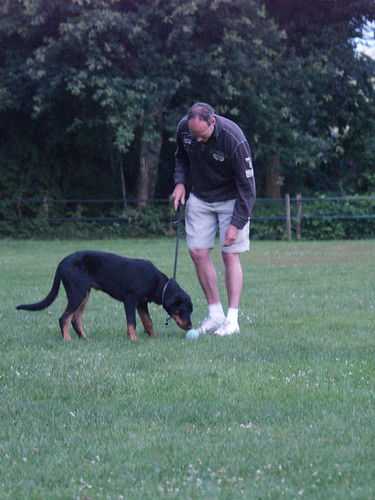Your Dog Is Listening – Your Just Not Speaking The Right Language
May 4th, 2014 by admin
Dogs provide us with unconditional love and lots of joy. No wonder they are the most popular pets in the US. However, having a puppy in the home is often a great deal of work. This new puppy has to be trained! If you stay consistent with these tips, your puppy will quickly be trained.
Verbal corrections must be sharp and direct. Do not waste time ranting about how bad your dog is. Just say “no” and show them what to do instead. Make sure your voice sounds firm and businesslike.
Use control when rewarding good behavior during dog training. If your pet successfully completes a task, then reward him only if he/she is calm. Don’t get too excited, though, as your excitement may cause them to break their concentration. You should stay calm and then give the reward.
Your dog needs to lead an active lifestyle. Dogs can get bored easily. If you do not have the full attention of your dog, they will be difficult to train. If your dog is fit and content, he will be much more likely to heed your instructions. Walk or run your dog frequently.
Always remain consistent when crate training any young pups. Give the puppy consistent opportunities to relieve himself every time you let him out. The dog will eventually learn that there are proper times to go outside and use the restroom.
Try to mistakenly avoid reinforcing any behaviors that are unwanted when doing canine training. This means don’t give your dog treats or attention for something he should not be doing. For example, don’t rub your dog’s head when they jump up at you and when you come in the door if you don’t want them to jump.
Let your dog have more freedom as he or she starts to behave and listen to commands more. The right balance of training, obedience and freedom ensures your dog has an enjoyable life. Just be careful not to overdo it on the freedom initially as it can set your dog training efforts back.
In order to prevent your dog from jumping on you, grab its paws anytime he jumps on you and gently squeeze them to inform them that this isn’t acceptable behavior. This will not hurt him, but it is quite uncomfortable. It won’t take much time for your dog to associate the unpleasant squeeze with jumping on a person, and he will quickly refrain from doing so.
Try toilet training your dog without there being any accidents. Watch your pet to identify his unique behaviors and signals that indicate when he must relieve himself. Pacing, whining and snuffling are common. When you know the cue, take action immediately. Head outdoors to the assigned potty spot right away. Praise your dog when he does his business where he is supposed to. Before long, he will be able to ask you to take him out.
Continue training throughout the dog’s entire life to ensure positive results. Your dog isn’t completely trained once he stops being a puppy. Reinforce the positive behaviors, reward your dog for being obedient and punish your dog for its bad behavior.
When traveling with your pet, ensure you pack all the necessary equipment. Water, bowls, bathroom bags and paper towels are good things to have to help everything run smoothly. It is often just as easy to buy a bag of food once you reach your destination as it is to pack it up and bring it along.
Now that you know what to do with your puppy, it is time to put these tips into action. Be patient with your animal and make sure, above all, that you show your dog when he is doing the right thing. Although these tips won’t work overnight, your pet will become your dream dog soon.
Avail the opportunity to know a lot more about our solutions by checking out our
 web site .
web site .
- Comments Off on Your Dog Is Listening – Your Just Not Speaking The Right Language
- Posted in Dog Training

